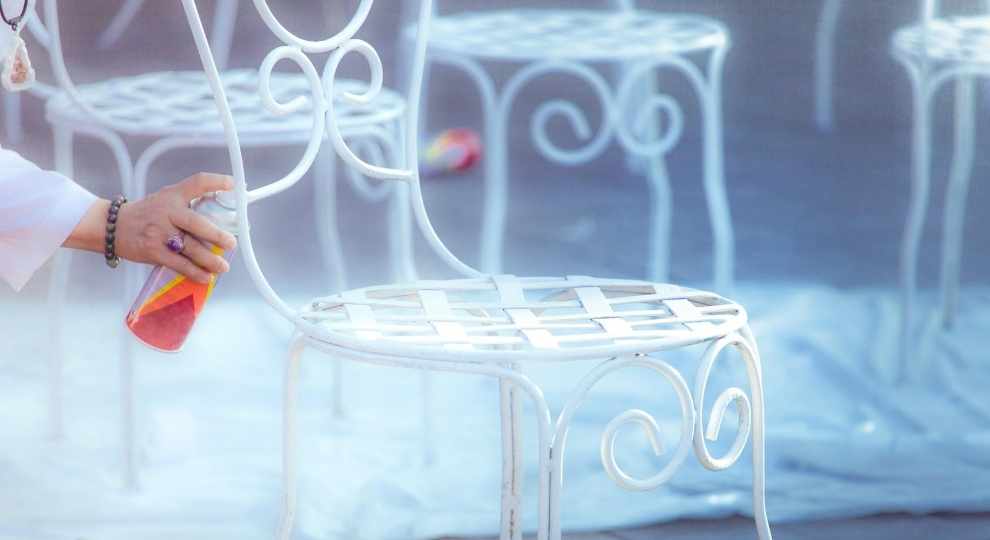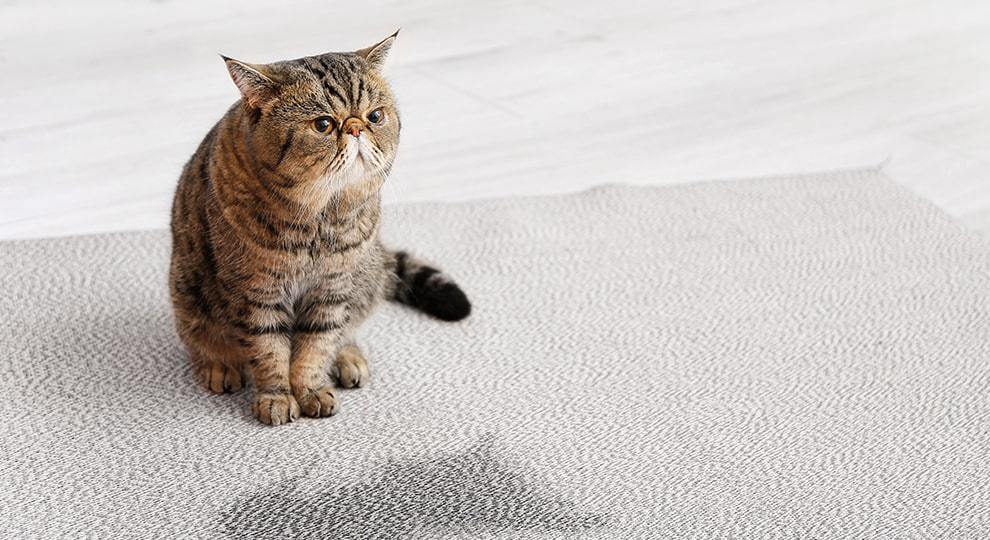The good and the bad of Plastic is it last forever! So, when plastics are becoming dull, distress, and unappealing, why not give them a quick makeover. If you’re wondering, how do you paint plastic? I’ve got you covered!
This piece will help you know and understand the right process of painting your DIY plastic projects like new again with a fresh coat of color and a smooth finish.
Do you know that plastics are a tricky material to paint? Yup, if you do not know the right technique, the paint will tend to drip, pool, and blot – yikes! Once it dries, it will easily peel-off.
Paint manufactures have evolved with technologies making special spray paints that make smoother, better stick, and peel-off resistant conventional paint. This spray paint works best with plastics.
However, you must follow specific procedures to sustain better adhesion.
What’s The Best Way To Paint Plastic? Spray Paint Versus Brush For Plastics
I’ll get straight to the point – SPRAY PAINT.
Not only is it faster, but I feel the result is also better. Also, the use of spray paint will bring you the utmost quality and reliable results.
Many of the DIY enthusiasts forget to check if the spray paint is suitable for plastics. Remember that manufacturers will indicate specifications if the spray paint will adhere to plastics surfaces.
Likewise, brush paint onto plastics is also possible. The only difference is the delivery of results. The downside of using brush paint on plastics surfaces is they leave smear and brush marks.
However, you can reduce the look of brush strokes on any surface if you add an additive to your paint to help level it. Personally, I only use this trick when painting moldings and doors.
It’s a God sent!
What Is The Best Kind Of Spray Paint To Use On Plastics?
You might feel intimidated and confused while facing the shelf inside a home improvement store to buy your spray paint for plastic— as a mob of brands and types of paints for plastic greet you.
Here are a few of the top choices and the reasons why they made the list:
1. Rust-Oleum Multi-Purpose Spray Paint
The spray paint does not only work with plastic but also a good to use for ceramic, wicker, metal, wood, plaster, and cement.
One can of spray will cover 12 square feet of the surface. It can dry fast in 20 minutes, depending on the weather conditions. You can easily handle the bottle and comfortably spray paint at any angle.
You should be careful when using it because it is an oil-based paint. Which means, it can leave a permanent mark. It sticks tights, durable, and emits a minimal odor.
2. Krylon Camouflage With Fusion For Plastic
Don’t let the name deceive you. To have different colors, you will need to combine (AKA) purchase more than one can in multiple colors to create a camouflage effect.
My research found that the name was given due to its ARMY matte color palette.
This paint can also be useful to use for plastics, word, hard vinyl, and metals—no need to do priming on the surface because the color itself is flat.
It is also recommended for surfaces that are prone to rust.
The downside that I can see for this paint is it dries slow. Lastly, some customers mention the nozzle becomes clogged, producing an uneven spray.
3. Rust-Oleum Spray Paint – Multi-Purpose Paint
The spray paint comes in 45 different colors. The advantage of this paint is it doubles the coverage of one can of spray paint. The paint dries fast in 20 minutes to the touch.
It works not only for plastics but also for wooden and metallic surfaces. Hence, it gives a smooth finish but not all that glossy. The bottle is comfortable to use, where you can spray at any angle.
4. Color Bond (617) Ford Dk Dove Gray LVP Leather
This paint is not only suitable for plastics but will also work for leather and vinyl surfaces.
It’s primarily used to repair the interiors of automobiles as it can restore the color to leather seats and restore the color of vinyl and hard trim.
It has a drying time of 45 seconds to the touch. This brand has a large range of colors to choose from.
Side Note: This paint is more of a refinisher, so if you are planning to change the color of having an uneven surface, I would not recommend this brand. In other words, it is best to use if you wish to restore color on a piece of a project.
The bright side of using this kind of spray paint is you don’t need to peel off the old paint on a surface. You simply spray and refresh the color of the target surface.
5. Rust-Oleum 211338 Paint For Plastic Spray
The spray paint is specialized for plastics. It is an oil-based and direct-to-plastic paint that does not require a primer. It works great in all kinds of plastics such as PVC, fiberglass, vinyl plastic, and resin.
The maker claims that the product dries in 20 minutes.
How Do You Spray Paint Plastic?
To get the top results, you need to follow these simple steps:
1. How To Clean The Surface Of The Plastic
Use warm water and dish soap. Scrub the plastic surface with a rag or sponge. Some plastics are best to populate the mildew, such as patio chairs, plastic tables, and vinyl fences.
They need more than one washing and may need to use a scrub brush. Wash the surface thoroughly with warm water and remove the suds.
2. Lightly Sand The Surface
Paint adheres to a rough surface.
Use a fine sandpaper grit to allow the soft texture of the paint to stick and provide a lasting result. However, avoid vigorous sanding because too much friction can cause the melting of the plastic and damage of the surface.
3. Clean The Plastic Surface With Mineral Spirits Or Alcohol
Wipe the surface with mineral spirits or isopropyl alcohol to remove the fine plastic dust due to sanding. It will be useful to stay in a well-ventilated area or open space to remove the debris easily.
4. Start Spraying The First Coat Of Paint
You need patience when spraying paint to a plastic surface. Plastic materials are not porous and do not absorb the paint, that is, entirely different from wood or metal. I recommend that you lay the subject in a flat position.
Start with test spray to the side, into the air, or on a piece of scrap material. When the sprayer releases fine mist, then you are ready to kick it off.
The best position is holding the can 8 and 12 inches away from the subject. Tilt the can to about 45-degree angle.
Spraying must be done lightly across the surface to avoid dripping.
DO NOT plan on covering the surface with paint on your first or second coat.
5. Apply Successive Coats
Let the paint dry for longer than the manufacture’s instructions. Most companies provide dry times for ideal weather conditions and for marketing purposes.
For example, I live in the high humidity state of Florida; therefore, nothing dries quickly.
Check if the paint becomes solid and dry when you touch. If you notice some drips and drops, sand the surface to flatten. Do not sand the surface if it is wet because it will result in smearing.
When ready, spray the plastic for the second coat. Do not get tempted to thicken the layer. Maintain the right tilt of the angle and light misting at about 8-12 inches away.
How Do You Get The Paint To Stick To Plastic?
1. Choose The Right Painting Materials
Always keep in mind that not all paint work best on plastic surfaces. You need to check the right material—is it a spray paint or you need to use a brush.
Often, the use of primer is a great help to make a smoother foundation and long life of color.
2. Prepare The Plastic Surface Correctly
Most of the failures of painting in plastic surfaces are due to not cleaning the surface thoroughly, or intentionally choosing not to clean the surface to save time.
Cleaning the surface will allow the paint to stick better and avoid the paint from peeling off. Remove the gunk with soap, water, and sponge – presto!
Likewise, making the surface rough by sanding is also vital to create a beautiful and perfect result. The coarse surface will help the paint to cling firmly.
3. Consider The Use Of A Primer
Primer is not a requirement when painting plastic surfaces. However, it does not help to create a smooth foundation and with adhesion.
4. The Correct Way Of Painting Plastic
Most people spray paint plastic surfaces incorrectly by pointing the nozzle directly at the surface. Others spray over the target surface that results in drips, drops, and dull results. Some also spray in a very distant position.
It would be best if you were consistent with the distance of the nozzle as well as the tilt of the can.
Your finish will have excellent results if you have smooth and continuous motion.
Unlike wood painting, for plastic surfaces, it is best if you do multiple coats in thin layers instead of thick ones. Thick multiple coating will end up uneven and drippy results.
5. Seal the surface
The best practice to create the best results of painting plastic surfaces is sealing it with a clear acrylic sealer.
The sealer will provide the extra layer of protection. If your DIY projects are plastics that are placed outdoors, giving an extra layer of protection is a great help. It sustains the freshness of the color for an extended period.
In Conclusion
There you have it! You will no longer be wondering, “How do you spray plastic?” Further, for a few dollars, you will be able to give your outdoor plastic furniture some new life or transform a piece of decor that you had considered to be past its prime.
If you’re wondering what are the best paints for metal, you will can the resources here.
Lastly, for home styling tips and tricks drop by anytime. Hey, we’re always up for company. In the meantime head over to this post, Decorating On A Dime | Home Styling to check out an outdoor bar cart you could create!






Leave a Reply